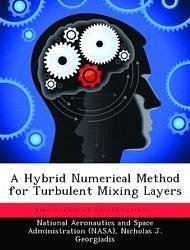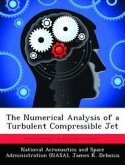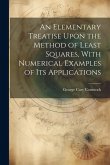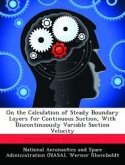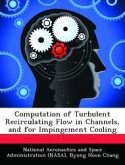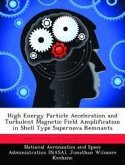A hybrid method has been developed for simulations of compressible turbulent mixing layers. Such mixing layers dominate the flows in exhaust systems of modern day aircraft and also those of hypersonic vehicles currently under development. The method configurations in which a dominant structural feature provides an unsteady mechanism to drive the turbulent development in the mixing layer. The hybrid method uses a Reynolds-averaged Navier-Stokes (RANS) procedure to calculate wall bounded regions entering a mixing section, and a Large Eddy Simulation (LES) procedure to calculate the mixing dominated regions. A numerical technique was developed to enable the use of the hybrid RANS-LES method on stretched, non-Cartesian grids. Closure for the RANS equations was obtained using the Cebeci-Smith algebraic turbulence model in conjunction with the wall-function approach of Ota and Goldberg. The wall-function approach enabled a continuous computational grid from the RANS regions to the LES region. The LES equations were closed using the Smagorinsky subgrid scale model. The hybrid RANS-LES method is applied to a benchmark compressible mixing layer experiment. Preliminary two dimensional calculations are used to investigate the effects of axial grid density and boundary conditions. Vortex shedding from the base region of a splitter plate separating the upstream flows was observed to eventually transition to turbulence. The location of the transition, however, was much further downstream than indicated by experiments. Actual LES calculations, performed in three spatial directions, also indicated vortex shedding, but the transition to turbulence was found to occur much closer to the beginning of the mixing section. which is in agreement with experimental observations. These calculations demonstrated that LES simulations must be performed in three dimensions.
Hinweis: Dieser Artikel kann nur an eine deutsche Lieferadresse ausgeliefert werden.
Hinweis: Dieser Artikel kann nur an eine deutsche Lieferadresse ausgeliefert werden.

